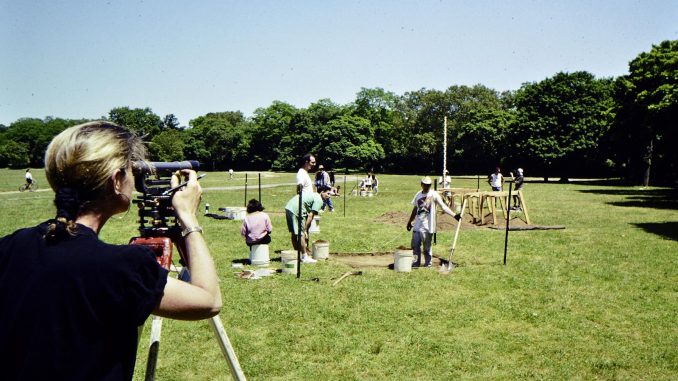
By Samia Afsar
There’s nothing quite like holding a piece of history in your hand. Researching and eternalizing material that once belonged to individuals who otherwise tend to be forgotten is less of a science, and perhaps truly an undervalued art. As part of an archaeological field school this summer, I, and a team of six other CUNY students investigated and immortalized remains uncovered by BC students at Van Cortlandt Park.
What I had failed to understand at the time was that this research, during a four-week course known as ANTH 3470, would quite literally change the trajectory of my life.
Brooklyn College Professor Arthur Bankoff and Frederick Winter conducted three separate excavations at Van Cortlandt Park during the early 1990s as part of their own summer archaeological field schools. During these field schools, Brooklyn College students were given the opportunity to learn archaeological methods and explore the Van Cortlandt property.
Located in the Bronx, Van Cortlandt Park was once Indigenous land which was later turned into farmland by early Dutch colonial settlers until ultimately being passed down to the Van Cortlandt family. The archaeology of Van Cortlandt Park is especially rich when considering the property spans centuries of history, the majority of it pertaining to post-colonial settlements.
Initially, hoping to find evidence of some of the first indigenous inhabitants before the property became the Van Cortlandt’s, Bankoff, Winter, and their students were able to uncover countless artifacts ranging from the 18th to 19th century. These included ceramics, glass, organic materials such as faunal remains and bones from a variety of different animals, leather shoes, and metal.
“There are probably some earlier pieces in the collection,” Professor Kelly Britt, who led this summer’s study of the excavation, told the Vanguard. “We haven’t explored the whole collection yet, so I’m not quite sure what else is there.”
Instead of working on a separate site to uncover our own artifacts, my field school, which consisted of Britt, six other students, and myself, worked on excavating the Van Cortlandt excavation. During the four-week-long program, we each selected an artifact and worked to investigate its history, essentially conducting research for the city.
“There are so many advantages to working with students, first and foremost, it’s fun,” said Britt. “[…] They [students] see things from different perspectives because history is really seen through the present, so when you’re studying the past, you’re really studying the present in many ways, and the students are able to bring so much different pieces of information to the table.”
During our field school, we worked on researching three ceramic animal figurines; a silver spoon with the Van Cortlandt initials and its maker’s mark engraved into it; two glass bottles, one medicinal and the other used to store condiments; a butchered bovine rib; and oyster middens.
From the collection, Britt had two favorites she enjoyed studying. The first is a ceramic dalmatian figurine that was discovered to be a Staffordshire Dog, which usually came in a pair of two. These ceramic dogs were used as gifts and as decorative interior pieces that could often be seen on top of shelves, fireplaces, and on window sills. Some theories suggest that Staffordshire Dogs were used as a secret ‘lover’s language,’ where women would display the figurines to communicate a message to their lover. If the dogs were displayed facing each other, it meant the woman’s husband was out of town and that her lover could visit. If the dogs faced away from each, that signaled her husband was home.
The second and perhaps Britt’s most favorite artifact was the engraved silver spoon since it provided a direct link to the Van Cortlandt’s themselves.
“If you’re thinking of a murder mystery board and you’re connecting objects to people, with the spoon, you can actually put a string to a potential person,” said Britt.
Considering that the Van Cortlandt artifacts are in fact a legacy collection, Britt emphasized wanting to showcase how one does not need to perform an excavation in order to gain grand results.
“Legacy collections are awesome in the sense that you don’t have to excavate in order to do really amazing research and find out really amazing things. You can do what we basically did and excavate an excavation. I think that’s undervalued,” said Britt. “I really like working with this collection, because we get to work directly with the city, with the archaeological repository, and the Van Cortlandt Museum itself. In many senses, we are helping them and they are helping us, and we get to work together on this much larger project.”
Piecing together fragments of Van Cortlandt’s history has become a passion for Britt that extends beyond processing and cataloging found artifacts. Though she offered the work done this summer for a separate class this fall semester, it was ultimately canceled due to low enrollment. However, Britt will be performing a mock dig on Thursday, Sept. 29, and will be offering similar courses alongside some new exciting additions in the near future.
